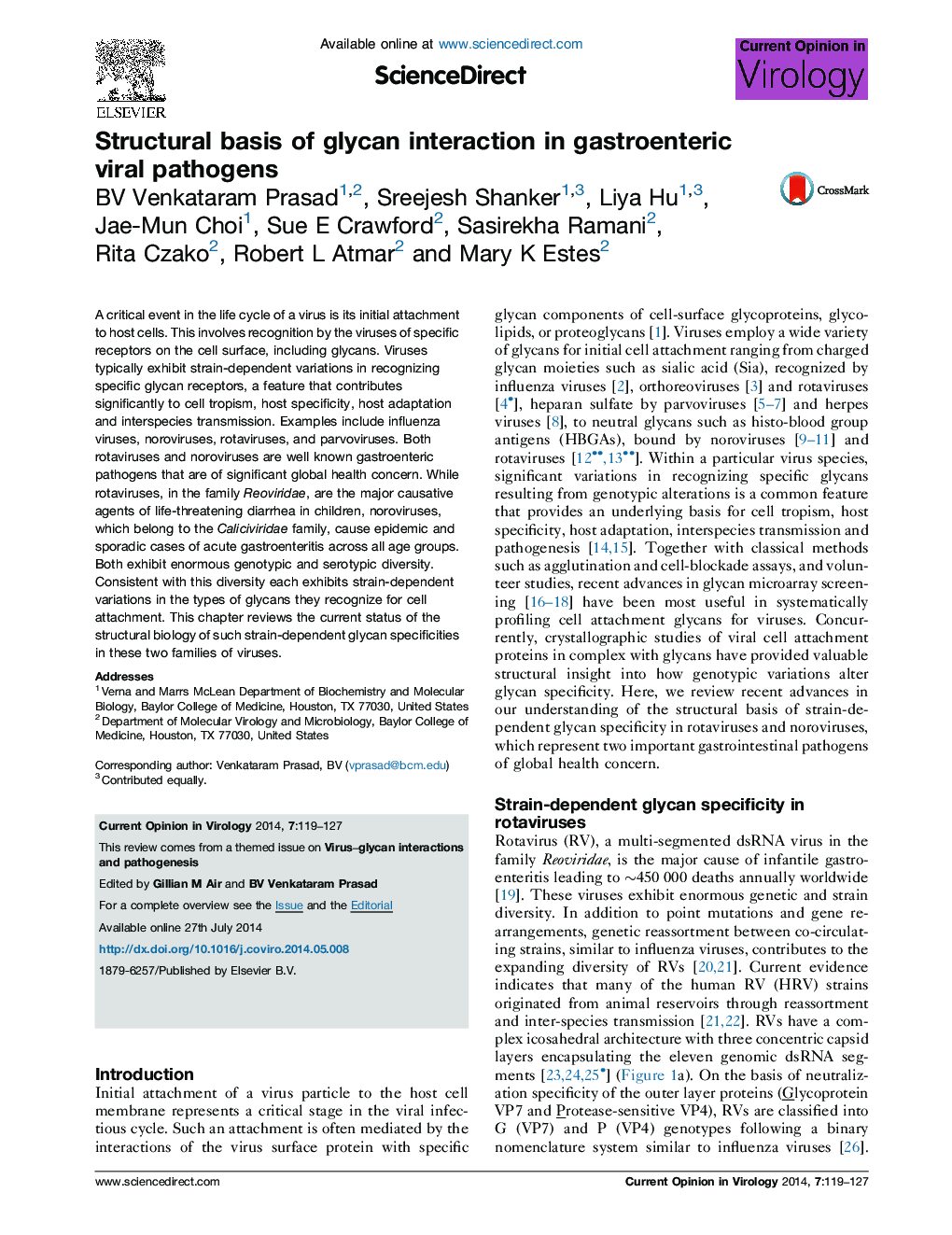| Article ID | Journal | Published Year | Pages | File Type |
|---|---|---|---|---|
| 2473299 | Current Opinion in Virology | 2014 | 9 Pages |
•Shifting the paradigm, recent studies indicate that sialoglycans are not obligatory for rotavirus cell attachment.•Polymorphic HBGAs are cell attachment factors for sporadic and globally-dominant human rotavirus strains.•A neonate-specific rotavirus strain binds specifically to type 2 precursor glycans.•Glycan specificity in GI noroviruses is not restricted to secretor-HBGAs; some strains bind to non-secretor Lewis HBGAs.•Sequence diversity among GII.4 norovirus variants results in differential binding specificity for secretor Lewis HBGAs.
A critical event in the life cycle of a virus is its initial attachment to host cells. This involves recognition by the viruses of specific receptors on the cell surface, including glycans. Viruses typically exhibit strain-dependent variations in recognizing specific glycan receptors, a feature that contributes significantly to cell tropism, host specificity, host adaptation and interspecies transmission. Examples include influenza viruses, noroviruses, rotaviruses, and parvoviruses. Both rotaviruses and noroviruses are well known gastroenteric pathogens that are of significant global health concern. While rotaviruses, in the family Reoviridae, are the major causative agents of life-threatening diarrhea in children, noroviruses, which belong to the Caliciviridae family, cause epidemic and sporadic cases of acute gastroenteritis across all age groups. Both exhibit enormous genotypic and serotypic diversity. Consistent with this diversity each exhibits strain-dependent variations in the types of glycans they recognize for cell attachment. This chapter reviews the current status of the structural biology of such strain-dependent glycan specificities in these two families of viruses.
